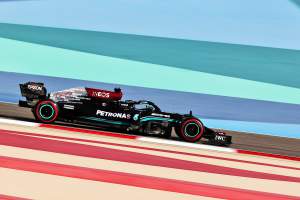Up Next

As our staff continue to pick their highlights of The Race’s 2021 content, F1 writer Scott Mitchell selects the insight Mark Hughes got from an in-depth interview with title protagonist Lewis Hamilton.
The rare occasions Hamilton speaks extensively with written media make for essential reading as it’s when he’s his most thoughtful and reflective.
This monster interview that our Mark Hughes was part of provided a brilliant insight into where Hamilton’s head was at in the midst of his toughest ever title fight.
Lewis Hamilton has spent his racing life controlling his emotions, trying to eliminate their impact upon his decisions in the cockpit.
He’s a powerfully emotional person, but his discipline usually maintains the upper hand and he’s had to use that a lot this season as Red Bull has finally given Max Verstappen a car with which to challenge him on a season-long basis.
It has meant for the most part that, unlike Verstappen, he’s not been racing in a carefree, uninhibited way this year.
His 2021 season has been a puzzle to unpick, a genuine campaign, with a strategy. A sometimes-tricky car, avoiding the risk of COVID which could totally derail said campaign – and a rival unencumbered by anything, just flying free – have been the hard points of that challenge.
Had Hamilton felt able to race in as carefree a way as Verstappen, he would likely have fallen out of this title contest by now.
The Mercedes is a devastatingly fast car at its best but the 2021 regulation changes impacted upon its low-rake aero concept in a way that has made it – as Hamilton describes it – a “monster diva” with performance much trickier to access than the original ‘diva’ of 2017. To fight for the title in such a car has required a quite deliberate discipline.
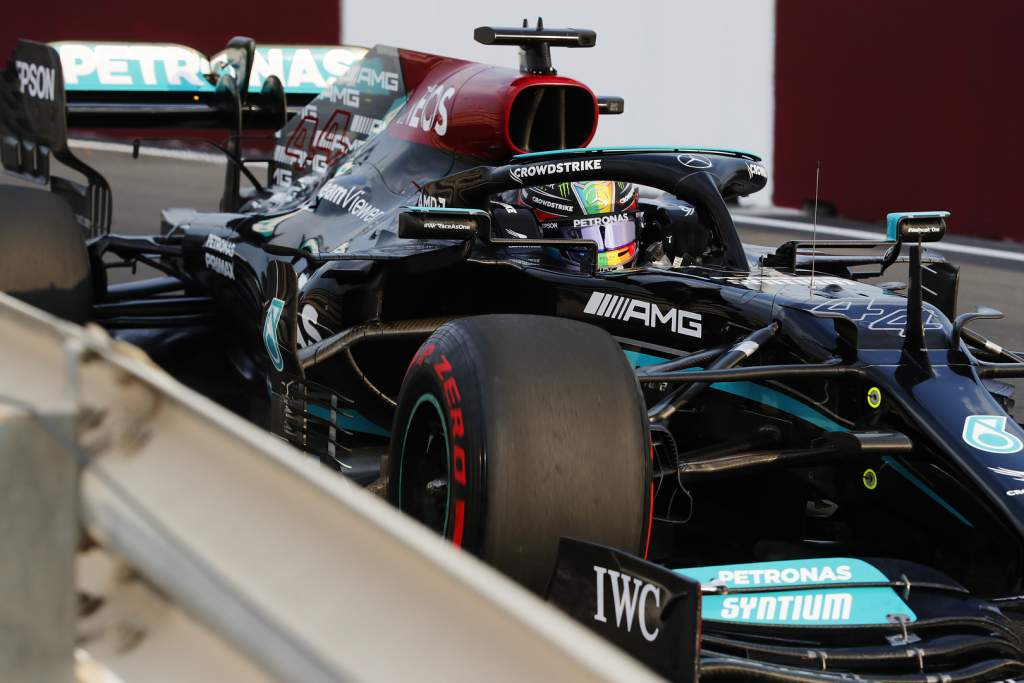
Almost everything about Hamilton – the way he races, the way he thinks, his attitudes – are informed by his extraordinary childhood story.
For the first five years of his karting career from the age of eight, until being picked up by McLaren, he and his father were trying to make an unlikely dream happen: to get to Formula 1 as a black kid from a council estate background.
Once Ron Dennis made him a McLaren-backed driver from the age of 13, that dream became a whole lot more realistic, but the feeling that it might all be taken away from him at any moment didn’t change.
It seems, even after seven world championships and more grand prix wins than anyone has ever achieved, to still pervade his feelings. That’s where both the emotion and the discipline seem to come from.
It could hardly be a bigger contrast with the attitude of Verstappen, someone born into the racing world who was never going to be anything other than what his dad was – an F1 driver – and for whom this was the most natural thing in the world.
Right there is defined much of the dynamic between this year’s two title contenders. That and the age difference and the different ways their cars dovetail with the way they prefer to drive.
So when we catch up with Hamilton in Qatar, in the late stages of this most intense title duel, he’s clearly in this very measured space in his head; relaxed but wry and hardened too. As he repeatedly points out, at 36 he’s been doing this a long time now. Here’s the elder master, in the midst of his toughest challenge yet against the cutting edge of the new guard.
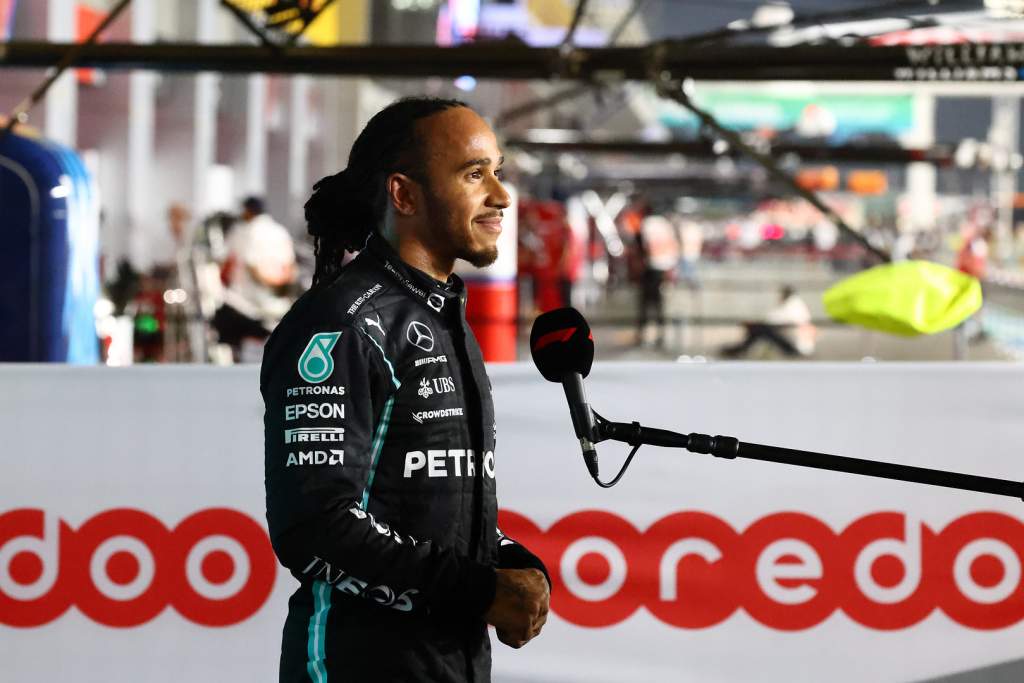
“I’ve been in so many championship fights throughout my career. They have all just been really different and unique in their own ways.
“It’s difficult to say one is harder than the other, because you are just in a different place. When I fought for my first championship in F1, I was a kid. I didn’t have the knowledge my team-mate had. I knew I had the ability, but I didn’t understand…”
So as Verstappen has been throwing down the gauntlet, Hamilton for the most part – but not always – has chosen not to take the bait. It would not have fitted with the strategy of the season.
How does he race against a guy wheel-to-wheel who will turn in when on the outside or run you out of track if on the inside?
“You just have to be very, very wary, more wary than ever before. Rather than giving someone the benefit of the doubt, you have to know that’s what’s going to happen, so you always have to be ready to avoid a collision at all costs, if it means going wide, because at the end of the day you want to see the end of the race, right?
“If you’re stubborn and you hold your ground you’re going to crash. So that’s what I’ve just tried to do. I’ve tried to make sure I avoid the collision.”
The responsibility to those around him weighs more heavily upon him than it seems to with Verstappen. Whether that’s just a difference in maturity, background, experiences or nature, who’s to say, but it’s there.
“I am not too big or too successful to have to back out to fight another day. I know that is sometimes the route you have to take; you have to be the smarter one.
“And sometimes you lose points in doing that, for sure, but it’s not just about me. I have 2000 people behind me and through that selfish position I could make – ‘No, I’m going to hold my ground’ and don’t finish – that cost all my team potential bonuses at the end of the year, all the hard work they have to do, the damage of the car.”
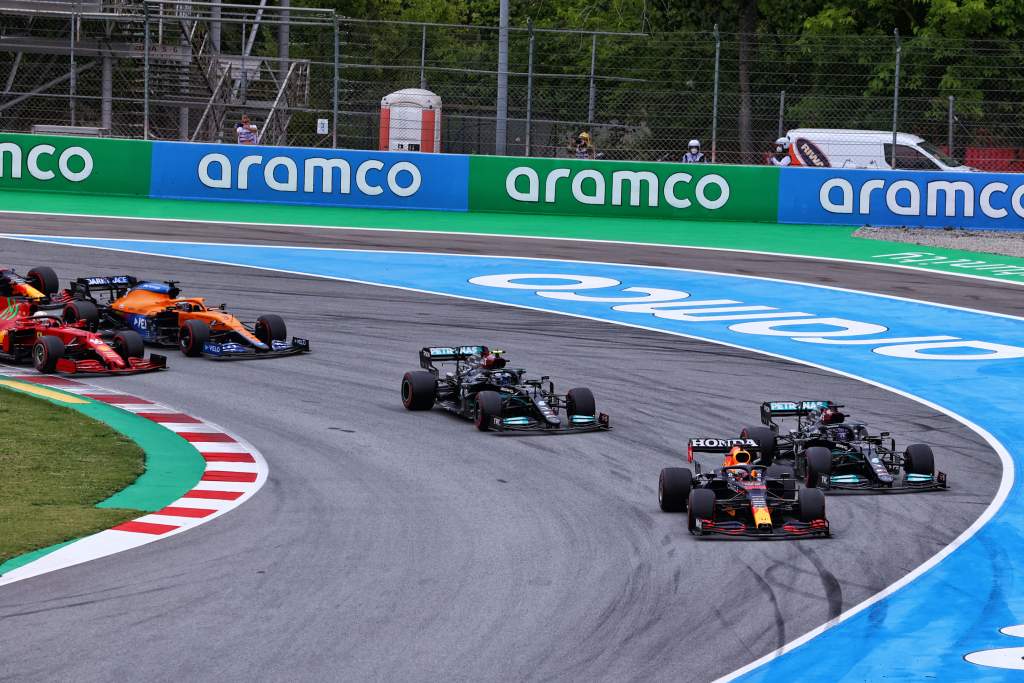
Hamilton has had such decisions forced upon him this year way more frequently than in any of his F1 seasons to date – by Verstappen, the dynamic, unstoppable force he first really encountered in 2016 in Malaysia with that audacious outbraking move early in the race, Max with nothing to lose as Hamilton was trying to win a title. But he’s encountered plenty of hard, ruthless moves on track, even before F1. If he ever feels wronged, you won’t see retaliation in kind.
“It’s just how my dad raised me. He said to always do your talking on the track. I was bullied as a kid, both at school but also on track and we wanted to beat them the right way, not by a car falling off or colliding with a car. Because that truly shows that there is no denying that you’re better.
“If you have collisions, they can say, oh, yeah, but this happened, this is one tactic that that driver has. But I want to be the purest of drivers, through speed, through sheer hard work and determination, so there’s no denying at the end what I’ve accomplished.”
Hamilton plays down the scale of Verstappen’s take-no-prisoners approach down, but it’s been absolutely the biggest recurring theme of the in-cockpit challenge for him this season.
“It’s not the only driver I’ve raced against that’s like this. I’ve raced so many drivers in my time and they’ve all been very different in the way they behave. And it’s interesting; now I’m older I look a little bit deeper into their character and a bit at their background and upbringing.
“Our upbringing is why we act out the way we do and behave the way we do, good or bad, so I try to understand those so I can have more appreciation of who that character is I am racing against.”
But there have been times when that resolve has broken – in one instance, at Imola, because of the irresistible possibility of pulling something out of the ordinary and getting just a little too greedy. On two other occasions – Silverstone and Monza – because he stood his ground against Verstappen’s challenge. In each case he had the accident which was inevitable when he matched Verstappen’s approach.
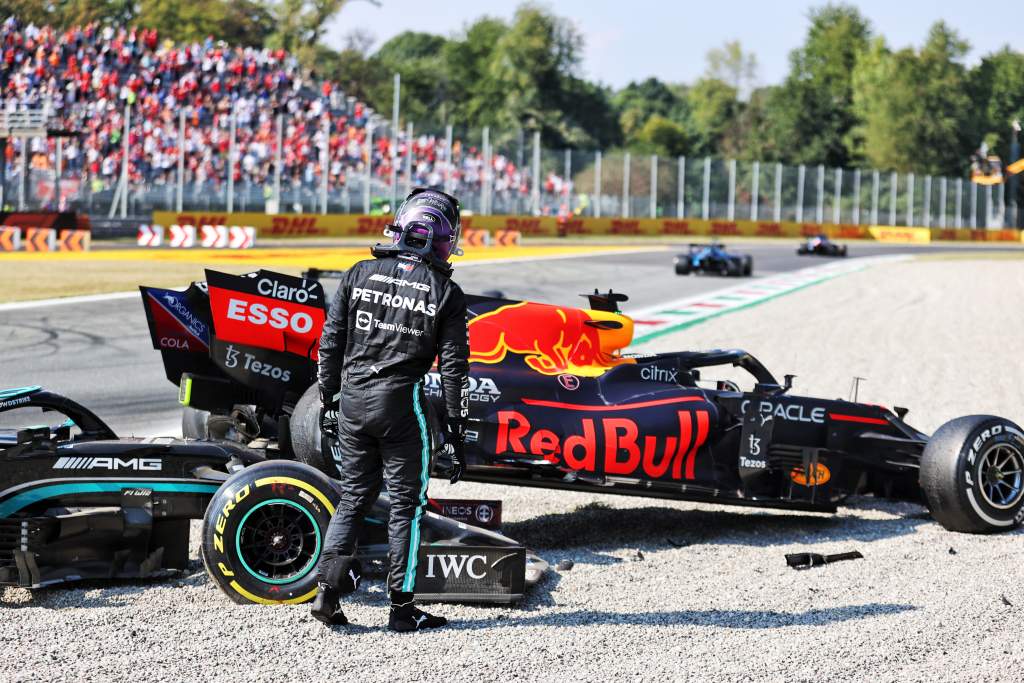
Imola was round two, fresh off stealing a win from a faster Red Bull in the opening round in Bahrain. It looked at that point that the Red Bull was going to be the faster car through the season.
There was nothing really to lose from Hamilton’s perspective as, chasing Verstappen, he used the traffic which had just delayed the Red Bull. It was probably the only opportunity there was going to be of stealing this win, a second one in succession – which would have been immense under the circumstances.
It’s the one time his discipline deserted him this year, and it put him in the gravel bed.
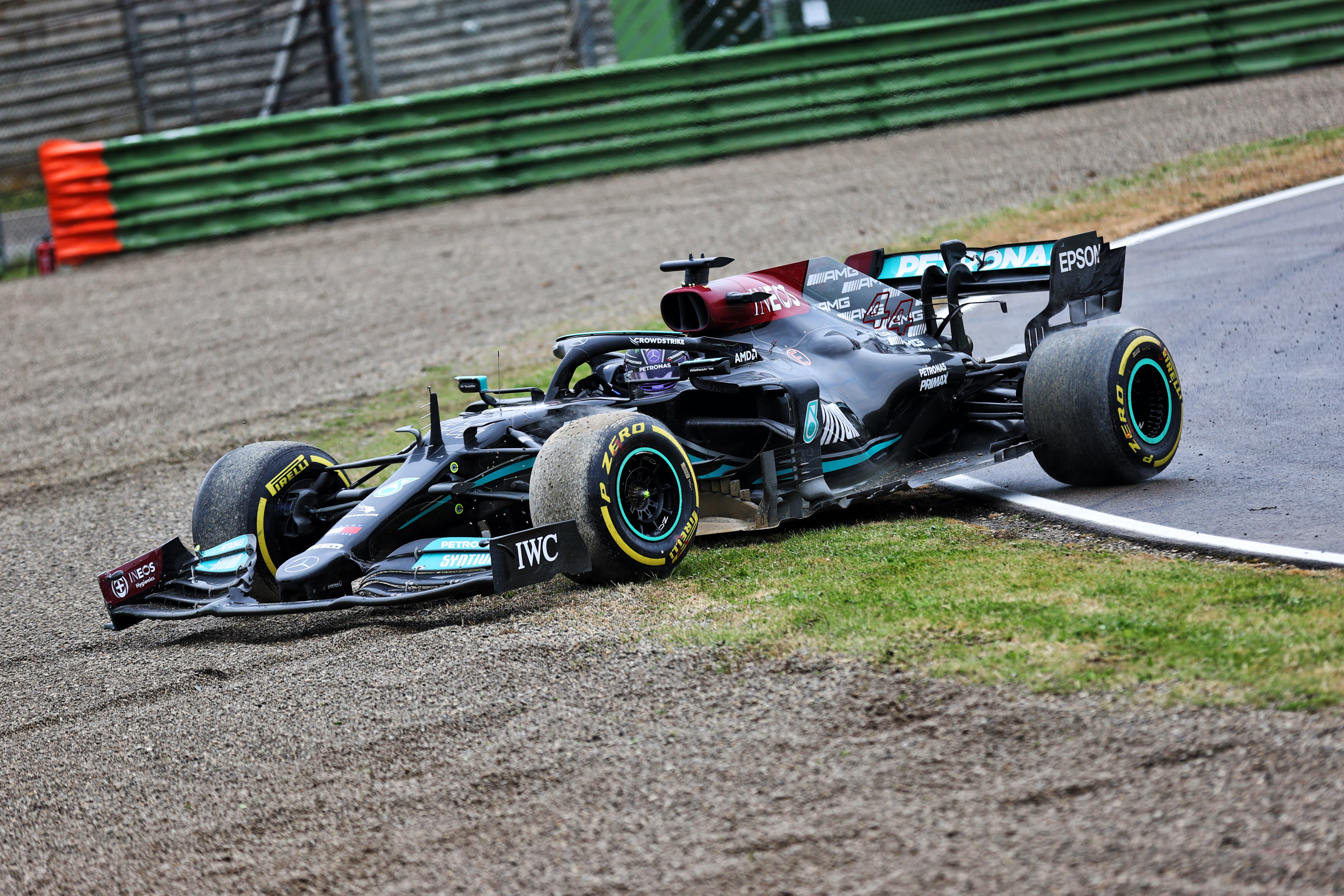
“Looking back you could say was I too hasty, too aggressive. And I’ll tell you, it hurt a lot going into that gravel. If I’d just been a tiny bit more patient as we lapped backmarkers but all I could think of was catching Max, passing him in the moment – so that wasn’t great.”
But that is the only thing he sees as a genuine error this year. Baku’s infamous brake magic lock-up he describes as ‘something just waiting to happen’ from an error in design detail. Both his clashes with Verstappen, at Silverstone and Monza, were from refusing to back down and – like Verstappen – insists he would do the same again.
But even in when he’s chosen to not back down, there’s been a certain calculation. Silverstone, for example, came off the back of three races of Red Bull domination, where it looked as if it might be about to run away with it.
But the Mercedes was working well around Silverstone and whichever of them got in front by Copse on lap one was probably going to win the race, so a certain amount of risk was justifiable. Back down and he loses seven points. Refuse to back down and best-case scenario he gains seven, worst case he loses none, with both in the gravel.
“Silverstone, if I was in that position, I would do the same thing again. That’s how I view from my racing experience – and I think I have a pretty good track record generally of overtaking and where I position my car and spatial awareness. But it has just been different scenarios.
“I wouldn’t say I have necessarily had to change my approach but I would say definitely there has been a need to gain points and you have to get a little bit less willing to give up too much because bit by bit you are losing more points as the season goes on. I was quite far behind in points at that time.”
At the root of why such calculation has been necessary is the respective pace of the Red Bull and Mercedes. The former is a massive improvement on last year, the latter was compromised by the ’21 regulation changes – and they have come out somewhere close overall, even though the Red Bull was quicker out the blocks.
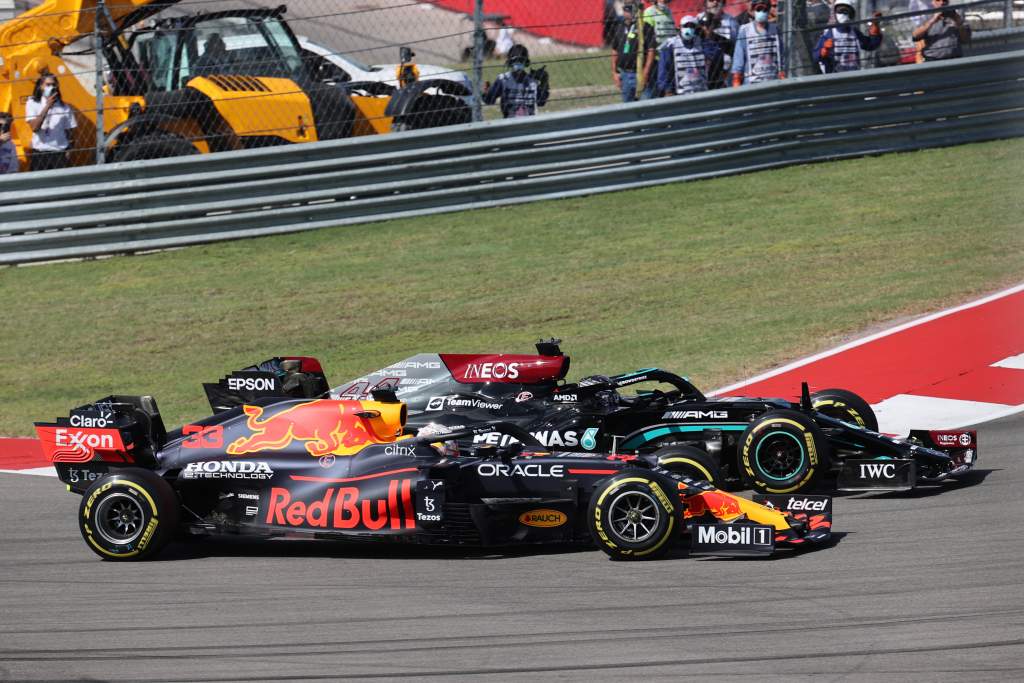
Pre-season testing in Bahrain made it clear ’21 was going to be a different sort of challenge.
“It was pretty bad for our standards. And you just focus on the task at hand. How can we rebalance the car, how can we get it back to where it needs to be, how we can improve the drivability, and that is what you put your energy towards, right?
“You don’t dwell on the fact that it’s not great, you try to find what’s good and then try and figure out how you can make the parts that aren’t so good better.
“That’s been our focus and it’s been I would say quite a confusing year because we’ve been down there but then we managed to just about win the first race. There’s been races where we’ve been at the front, and then there’s races we’ve been way off and you just never really know how she’s going to behave when you get to the tracks.”
It’s not generally appreciated how big a difference in personal performance is possible between a car naturally balanced to a driver’s own style in which they can let rip, and one which is not. In the last two races of Brazil and Qatar we’ve seen just what Hamilton can pull from the bag when the car is as he likes it.
The fundamental rethink of set-up before Brazil seems to have allowed the car’s Silverstone upgrade spec to have been properly exploited. But for much of the season he’s been trying to get it back into a sweet spot it took years of development to get to.
From the tricky diva of 2017 to the beautifully poised car of 2020, each Mercedes was a step closer to Hamilton’s ideal in terms of its basic hard-wired traits. The ’21 reg change completely demolished that progress.
“Definitely, [it spoilt that]. We knew we were going to lose all this downforce and once we found how much downforce we lost, the whole characteristics of the car shifted so what we had worked on for several years, getting the car into that sweet spot like last year, it’s been a nightmare to undo by playing with the tools when you can’t actually change any of the tools and it just is what it is and trying to find smart ways to work around less downforce.
“There have been a lot of elements that have made it harder than ever. It’s been the hardest car to set up and I’ve done a lot of sim testing but even sim days, you go and do a sim day and the sim is not in the right place it’s supposed to be – the grip level’s not right or the wind effect is not right or the thermal deg is set wrong so you can come away with bogus numbers and you have to be so careful with the data that you are receiving and the decisions that you’re making. It’s been a rollercoaster ride.”
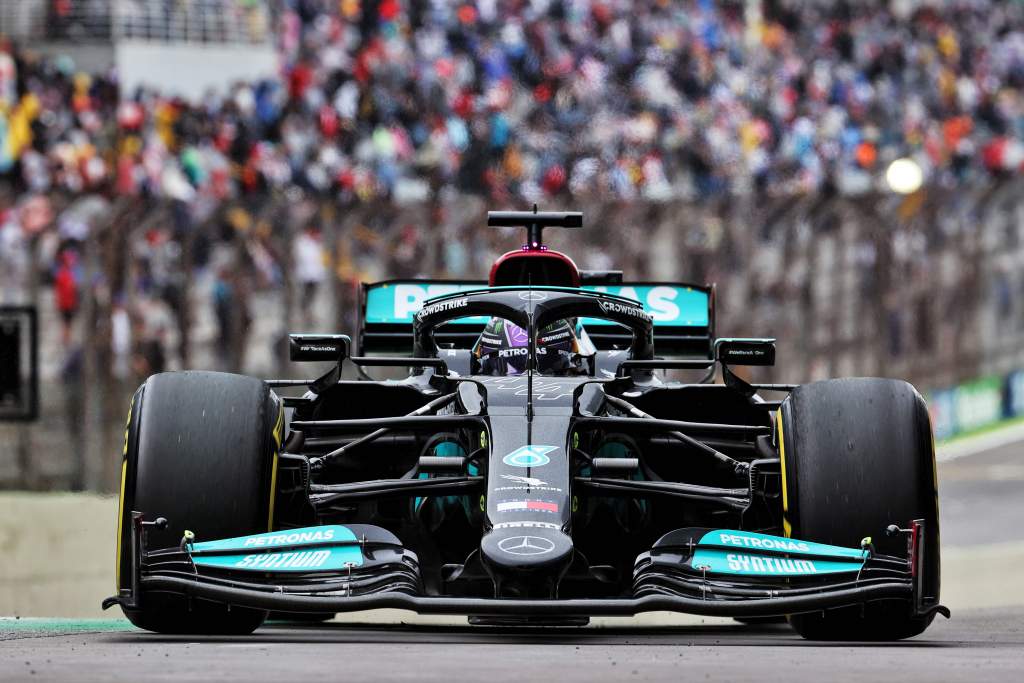
The Mercedes typically isn’t as close to its optimum as the Red Bull when they first take to the track on a grand prix weekend. Not necessarily because the simulation tools are not as good, more likely because its sweet spot is in a more difficult to access place.
Even when it’s working well, it’s not a car which Hamilton can absolutely wring the neck of on corner entry, with late, hard braking and super-hard turn-in, knowing that the back will keep up.
In such a car, Hamilton can do extraordinary things. In anything less than that, he can invariably match the car’s potential and scrape out the lap time when it matters. But it won’t be a tool which will release his full powers.
Give Verstappen a car which sits on a nervous knife edge of rear stability and he’s outrageously quicker than the car should be, using the instability to minimise the time the car is rotating. It’s a very challenging car to drive, but a very fast one.
That’s what Red Bull has given him at every race apart from when it couldn’t be balanced around a rear end that was working just a little too well for the weaker front – in Hungary, Turkey and Qatar. But Verstappen has more frequently than Hamilton this season had a car perfectly suited to his natural style.
“The car has been very, very hard to set up. Toto [Wolff] said one of our cars was a diva but this one is a monster of a diva.
“Plus we’ve had less practice time, so it’s been harder to get the car in the right window. And so therefore, when you don’t get the car in the right window, you just limit your potential. So I’m just not able to maximise my ability through the set-up not being in the right place, and it’s been very, very hard to get it into the right place.
“[In Brazil] I got the car exactly where I wanted. And that was like literally hitting the nail on the head. But that’s like maybe once or twice we’ve done that this year. I’d say in Brazil we maybe operated in that optimum, but most of the time we’re not optimising it.
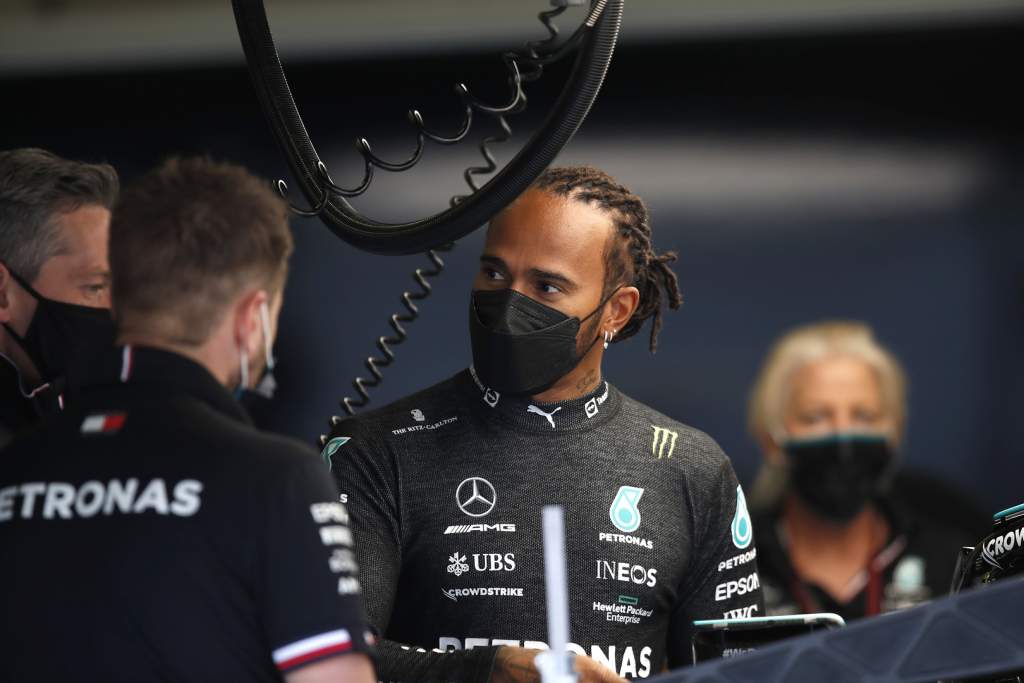
“So you look deeper into the detail to try and find any performance that’s left over. So if, for example, the bodywork is slightly too open for cooling and you’re leaving 30 milliseconds of performance on the table, you chase it more than you’ve ever done before. You’re really hard on the guys: ‘Close the damn car up.’
“Or it could be heating from the front discs, or tyre pressures, gear ratios. When you’re shifting the gears, or the revs bog when you do the launch. The fuel target: making sure that you’re not finishing the race with four kilos of fuel and leaving a second of race time or whatever it is on the plate.
“So those are things that I’ve been applying more energy towards and being a lot harder with the team on. Because we need every millisecond we can get, particularly at the places where we have been really quite a bit down. Just going into more detail everywhere… I would say I’ve been more committed than I’ve ever been.”
That’s extended to his precautions against reinfection from COVID after the virus forced him to stand down from a race last year.
“I would say the biggest part of the pressure of the season has been the pandemic. That’s really made a monumental difference in terms of the isolation, and knowing whether you can or can’t be around people and isolating yourself and people. It’s been quite tough… I would say harder to find a balance in normal life, in and around your work life.
“In some places they are relaxing the rules and then it’s so easy to let your guard down and find yourself in trouble. So like just constantly keeping it on your mind.
“And your social interaction is now different. So my social interaction is different to how it was in the past, because you keep your distance from everyone. Hold your breath around everyone. So it’s definitely, I would say, much, much harder.
“You still live in fear, you know? Everyone I see around me, all my friends, if they miss a day of work, or a week of work, it’s not the year over. Whereas it’s critical for us drivers. The year can be over if you miss one or two races.
“I’ve seen other sportsmen that are also super-relaxed and don’t care. If they get it, they get it, and it’s been really strange seeing that.”
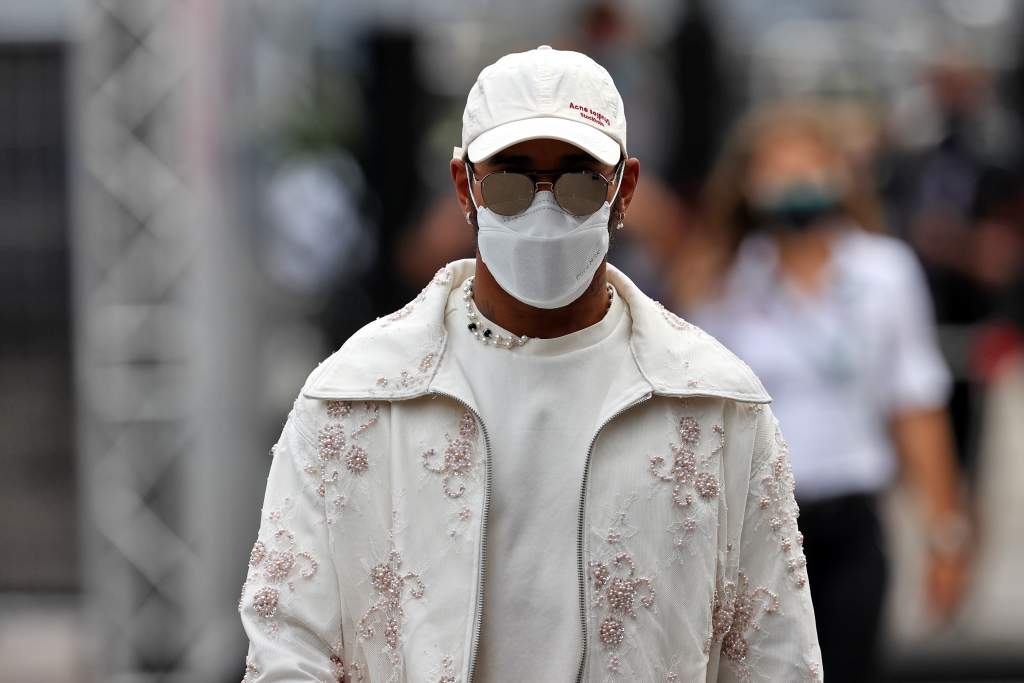
He’s found an unexpected way of releasing that pressure, though. His move into activism last year has flowered into the establishment of the Hamilton Commission and Mission 44 and the motivation for that was righteous anger at inequality he sees in the world and his identifying with it. But it’s also brought a way to decompress from the strains of the championship fight – which is obviously a much smaller fight than those these initiatives are addressing.
“I don’t have a problem with distraction; I’ve been doing it a long time. So I know what I need to do to remain focused. I never take my eye off what my ultimate goal is in racing and winning the championship.
“But I have these other things that kind of help me strike a balance… I think when you have time separate from the races, when you’re trying to figure out what to apply your time and effort towards, sometimes you’re putting time and effort into something that doesn’t give anything back, right, or it doesn’t have any long-lasting impact, doesn’t have any real purpose.
“So to finally find something that has real purpose and real potential change and shift for the industry and for people, that feels super rewarding. So, yeah, to be able to focus on something other than racing, it’s great. It takes the pressure right off.”
There could hardly be a more inspirational figure than himself to lead his campaign. A black man becoming the most successful ever exponent of what has historically been a white sport is in the big picture truly remarkable.
It seems less so from inside F1, perhaps, when performance is what people are looking at and from where it feels it shouldn’t even be a distinction to be made. But in his early days in the sport as a child, he certainly felt it.
“When I was younger, it wasn’t a case of believing I could be different. I arrived and I knew I was different because it was pointed out to me. I guess I was very, very lucky to have that in my DNA. I am a real fighter, not only on the track but in real life.
“I got bullied by multiple kids, but I’d still fight back, you know? I don’t run away. I think you never arrive in a class and think I’m different so I should be treated differently, regardless of whether that should be the case. It’s a difficult one to really pinpoint.
“I watched Ayrton Senna, and I don’t see him any different to me, while he is obviously different. Like all the kids out there, I see Superman. I don’t see that he’s white and doesn’t look like me. I just see him as an awesome character that goes around and saved people, right?
“But of course things are highlighted as you do grow and become more consciously aware of your surroundings and how you fit in or don’t fit in.”
There, as he fights for an astonishing eighth world championship, you feel the direct line back to the wide-eyed little kid and the tough arena he’s about to enter – and vanquish like no other has ever done before. The energy of that kid is still right there in the worldly, rich, famous multiple world champion, who still wants more.
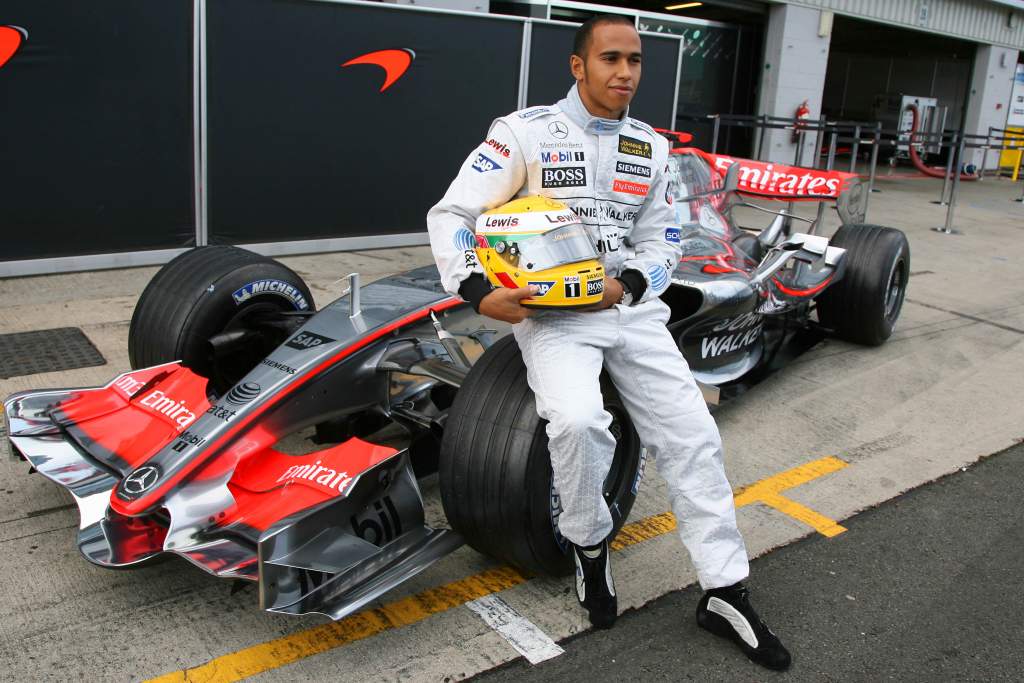
The longer he stays, the more challenges like Verstappen will be thrown at him. For now, there’s still a hunger for more.
“I know how it is for [Verstappen], the limelight and the pressures of the sport at that age. I know that he’s super-fast and he’s going to get stronger and stronger as he matures over time.
“I look at myself when I was 24/25; dude, the mistakes I was making back then! I had the speed but I was going through a lot of different experiences outside the car and a lot being in the limelight, the pressures of being at the front. I don’t think I got much right then – so I don’t hold that against anybody.”
There’s not just Max either, is there? Right next door in the other garage will be George Russell, likely a tougher customer than his team-mate of the last few years.
“George is a super-talented young man and I think there’s a huge amount of respect already going in and we’ve got… I think there’s just a nice balance at the moment. But he’s going to want to be quick, I know he’s going to want to show up and win, and do all those things that you do when you enter a new role.
“I remember when I went up against [Fernando] Alonso, of course I wanted to beat him at the first race so I appreciate and expect George to have that mentality – otherwise he’s not a winner, you know? I think he will have that mentality. Again I’m in a different place. I really want to see him succeed.
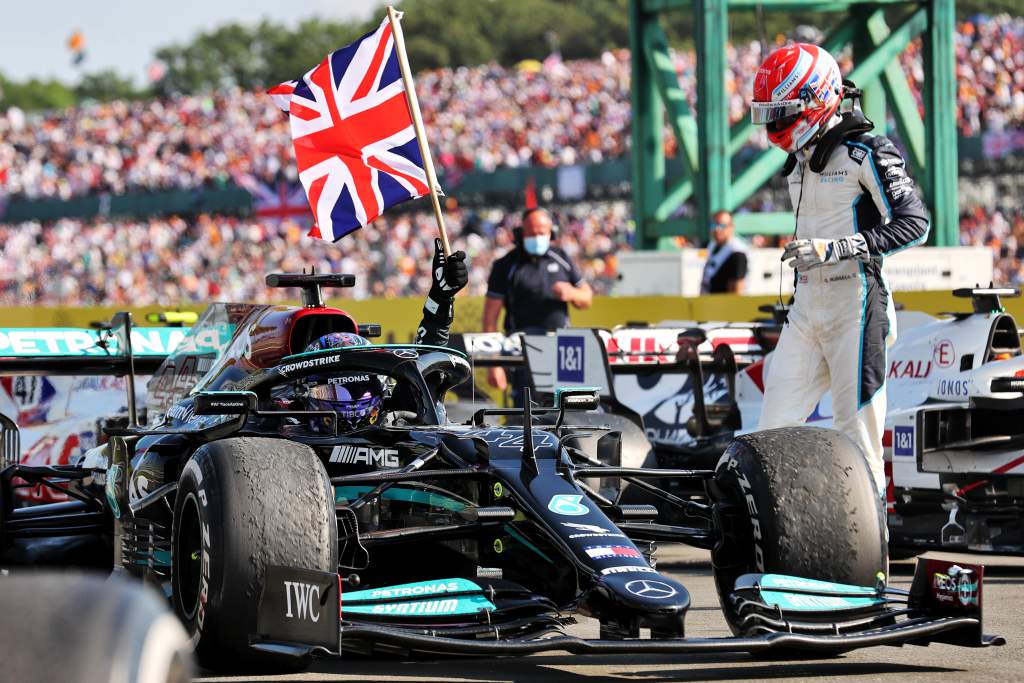
“There’s going to be a point where I don’t continue in this sport and, you know, he’s my team-mate and he’s going to be the next Brit that I want to see win a world championship. So I really hope that whilst we are going to be competing and I want to be number one, win on track, I hope I can have a positive influence.”
Enjoy him while you still can.









